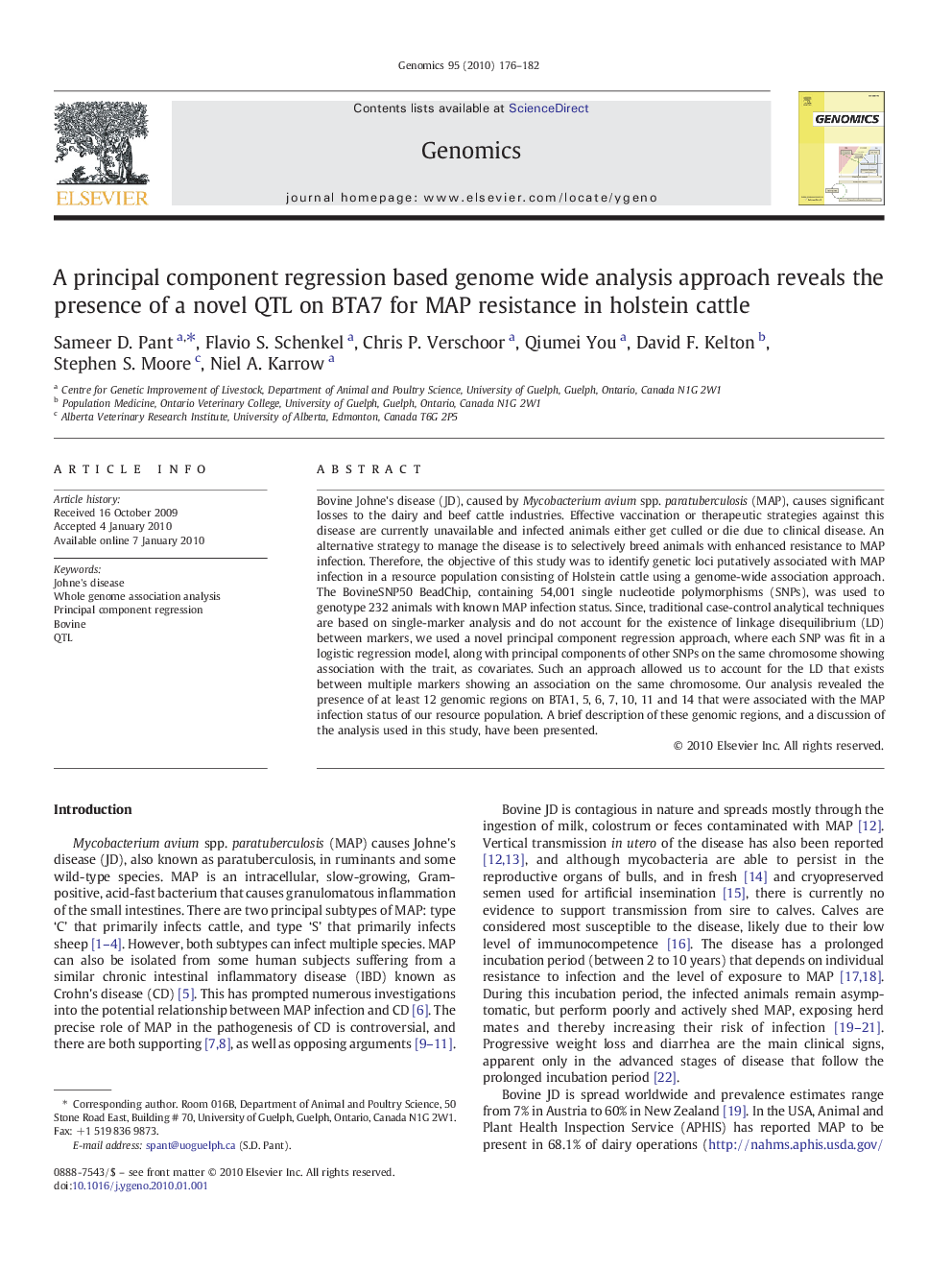| Article ID | Journal | Published Year | Pages | File Type |
|---|---|---|---|---|
| 2821030 | Genomics | 2010 | 7 Pages |
Bovine Johne's disease (JD), caused by Mycobacterium avium spp. paratuberculosis (MAP), causes significant losses to the dairy and beef cattle industries. Effective vaccination or therapeutic strategies against this disease are currently unavailable and infected animals either get culled or die due to clinical disease. An alternative strategy to manage the disease is to selectively breed animals with enhanced resistance to MAP infection. Therefore, the objective of this study was to identify genetic loci putatively associated with MAP infection in a resource population consisting of Holstein cattle using a genome-wide association approach. The BovineSNP50 BeadChip, containing 54,001 single nucleotide polymorphisms (SNPs), was used to genotype 232 animals with known MAP infection status. Since, traditional case-control analytical techniques are based on single-marker analysis and do not account for the existence of linkage disequilibrium (LD) between markers, we used a novel principal component regression approach, where each SNP was fit in a logistic regression model, along with principal components of other SNPs on the same chromosome showing association with the trait, as covariates. Such an approach allowed us to account for the LD that exists between multiple markers showing an association on the same chromosome. Our analysis revealed the presence of at least 12 genomic regions on BTA1, 5, 6, 7, 10, 11 and 14 that were associated with the MAP infection status of our resource population. A brief description of these genomic regions, and a discussion of the analysis used in this study, have been presented.
